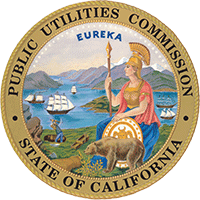What National Digital Connectivity and Lifeline Awareness Week Means for Californians
.png?mw=1440&hash=D4F3C34A1F24BEC4C6BBC4255840568C)
The week after Labor Day, regulators across the country come together for National Digital Connectivity and Lifeline Awareness Week dedicated to raising awareness about the importance of affordable communication services. It’s not just about staying connected, it’s about making sure every household, no matter the zip code or income level, has access to essential communications services that power daily life: healthcare, education, work, and emergency services.
The CPUC plays a leading role in this effort. For us, this week is more than symbolic. It’s an opportunity to share our commitment of meeting the evolving communication needs of Californians by streamlining access and making digital and phone connectivity accessible and affordable for millions across the state.
Why This Week Matters
National Digital Connectivity and Lifeline Awareness Week began as a joint effort by the National Association of Regulatory Utility Commissioners (NARUC) and the Federal Communications Commission (FCC). Its mission was to ensure that people understand and can access Lifeline, a program that provides monthly discounts on phone or broadband services for eligible low-income households.
But this year, the spotlight widens. The campaign now includes digital connectivity, not just phone access. That shift reflects today’s reality: broadband isn’t a luxury, it’s a lifeline.
CPUC's Role: Making Access Real
In California, we’ve expanded Lifeline into a broader and more inclusive program: the California LifeLine Program. Operated by the CPUC, this program provides up to $19 per month in discounts on home, cell phone services, or a bundled voice with broadband service and even more for connection and conversion costs. And when paired with the federal Lifeline benefit (up to $9.25 monthly, or $34.25 for residents on Tribal lands), it makes a real difference in household bills.
Enrollment is open to households already participating in public programs like Medi-Cal, CalFresh, SSI, WIC, and more, or those that meet specific income thresholds (e.g., $32,600 annually for a two-person household).
Applying is simple. Visit our LifeLine website to see if you qualify and find providers in your area.
Beyond LifeLine: A Bigger Digital Push
LifeLine is just one part of our broader mission. The CPUC also runs other key programs designed to expand broadband access across the state:
-
Broadband for All: A statewide commitment to equitable, affordable broadband.
-
Last Mile Federal Funding Account: A $2 billion grant program for last-mile broadband infrastructure projects to connect unserved Californians.
-
California Advanced Services Fund (CASF): Supports broadband infrastructure and public housing projects in underserved areas.
-
Deaf and Disabled Telecommunications Program (DDTP): Ensures people with disabilities have access to necessary communication tools.
-
Digital Equity and BEAD (Broadband Equity, Access, and Deployment) Programs: Capitalizes on federal investments to help close the digital divide.
During this Awareness Week, we’re not just educating, we’re listening. We’re working with community partners, service providers, and local governments to meet people where they are and ensure no one is left behind in our connected world.
What This Means for You
If you're struggling to afford phone or internet service, or know someone who is, this week is the perfect time to explore your options. Whether it’s through California LifeLine, federal programs, or our broadband expansion initiatives, help is out there. And we’re here to make sure you find it.
Digital connection isn’t a privilege. In California, we believe it’s a lifeline and necessary for public safety. To learn more about all of CPUC’s internet and phone services, visit the CPUC’s website.
By Taseen Shamim, Public Information Officer
